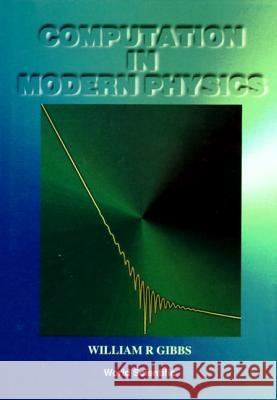Computation In Modern Physics » książka
Computation In Modern Physics
ISBN-13: 9789810220440 / Angielski / Twarda / 1994 / 368 str.
The first half of this book is designed as a course for first year graduate students in the sciences. Problems are chosen to illustrate mathematical and physical subjects. In this first half only a moderate background in physics and mathematics is assumed. Integration, Monte Carlo techniques, the solution of linear systems and finite element methods are treated with enough depth to allow the student to understand them. An introduction to modeling with differential methods, digital signal processing and chaos is given. One chapter provides an introduction to common computer architectures.In the second half a thorough understanding of quantum mechanics is assumed with the Schrödinger equation being treated with scattering and bound state conditions. The time-dependent Schrödinger equation is also solved. A thorough introduction to the solution of the quantum-mechanical bound state with variational and Monte Carlo Green's function is given, with two examples being the solution of the bound state nuclear helium 4 and the energy of atomic liquid helium 4 at zero temperature. The exact solution of the low energy scattering problem is presented. Algorithms for the Borel and Pade methods for the summation of divergent series are studied. In the final chapter, methods for the solution of hadronic scattering from nuclei are treated including single, double and multiple scattering as well as the derivation and calculation of multiple scattering through fundamental optical models.The first half of the book will be suitable for a general course in computational methods while the second half can serve as a second semester course for Physics majors intending to do work in hadronic physics or scattering.











